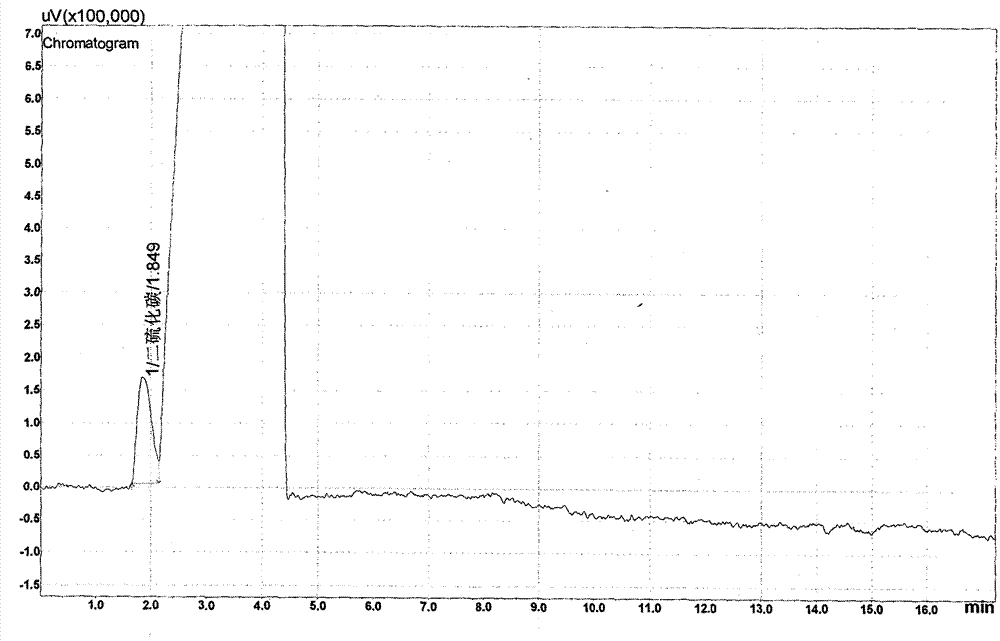Determination of amount of residual dithiocarbamate bactericide in grain through gas chromatography method
A technology of dithiocarbamate and gas chromatography, applied in measuring devices, instruments, scientific instruments, etc., to overcome instability, eliminate interference, and reduce damage
- Summary
- Abstract
- Description
- Claims
- Application Information
AI Technical Summary
Problems solved by technology
Method used
Image
Examples
Embodiment 2
[0036] The selection of embodiment 2 sampling mode
[0037] Headspace sampling will cause the problem of poor sampling repeatability. Mancozeb decomposes into carbon disulfide under acidic conditions. Carbon disulfide gas will contain a large amount of HCl gas, which is very acidic and seriously damages the chromatographic column and the ECD detector. Therefore, the isooctane solution, which is relatively non-volatile and highly soluble to carbon disulfide, is used to absorb the carbon disulfide produced by the decomposition of mancozeb. Isooctane has no solubility to HCl gas, and the measured absorption pH is neutral, avoiding the impact of acidic substances on the chromatographic column. and detector damage.
Embodiment 3
[0038] The selection of embodiment 3 instruments
[0039] Compared with the ECD detector, the FPD detector has good selectivity, which eliminates the large interference factors of the ECD detector impurity; compared with the GC-MS, because the peak time of carbon disulfide is earlier, the solvent delay cannot be carried out, which seriously affects the GC-MS. MS, so choose FPD detector with sulfur filter.
Embodiment 4
[0040] Embodiment 4 method detection limit and precision
[0041] Add the diluted standard to the sample, add stannous chloride-hydrochloric acid for hydrolysis, absorb in isooctane, centrifuge, and measure with isooctane solution gas chromatography. The experiment shows that when 0.2 μg of standard is added, the response of the target The signal is 2-3 times of the noise signal; that is, the minimum detection amount of this method is 0.2 μg, and the detection limit of this method is calculated according to the following formula
[0042] MDL=C / m
[0043] In the formula: C is the minimum detection amount, and m is the weighing amount.
[0044] Calculated according to the sample mass of 5 g and constant volume of 5 mL, the detection limit of this method is 0.04 mg / kg.
[0045] Weigh 6 parts of the same sample, each 5g±0.01g, measure according to the above-mentioned experimental method, the results are shown in Table 1. It can be seen from Table 1 that the relative standard de...
PUM
 Login to View More
Login to View More Abstract
Description
Claims
Application Information
 Login to View More
Login to View More - R&D
- Intellectual Property
- Life Sciences
- Materials
- Tech Scout
- Unparalleled Data Quality
- Higher Quality Content
- 60% Fewer Hallucinations
Browse by: Latest US Patents, China's latest patents, Technical Efficacy Thesaurus, Application Domain, Technology Topic, Popular Technical Reports.
© 2025 PatSnap. All rights reserved.Legal|Privacy policy|Modern Slavery Act Transparency Statement|Sitemap|About US| Contact US: help@patsnap.com



